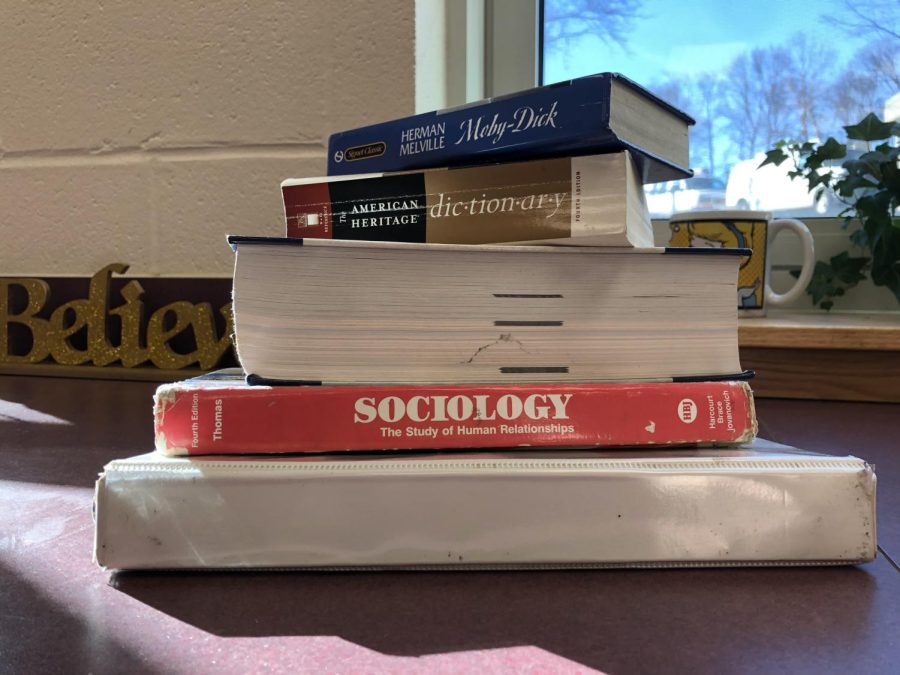Test Anxiety Explored at WHS
January 27, 2022
What is Test Anxiety?
Have you ever sat down to take an exam and suddenly your palms start profusely sweating? If this happens to you, you may be experiencing test anxiety. According to TeensHealth, test anxiety is a subcategory of performance anxiety; when someone experiences pressure to execute whatever they are doing well or perfectly (usually because it is important to them). Test anxiety is typically characterized by the physical symptoms individuals may feel. These symptoms include: experiencing butterflies in one’s stomach, headache, stomachache, shaking, sweating, elevated heart rate, lightheadedness, nausea, and not being able to remember information.
Test anxiety happens when someone is thinking about or about to start something stressful. This causes the body to create adrenaline, which is made when the body is preparing for danger. This adrenaline is why someone with test anxiety experiences symptoms. In addition to this, thinking about how one’s body is responding or worrying about not recalling the information for the exam worsens one’s testo feel nauseous, or your leg is bouncing like crazy? If yes, it is possible that you’ve experienced tt anxiety.
People who experience general anxiety are more likely to experience test anxiety as well because their brains are already telling their body to be in distress about other things. Perfectionists, as well, usually suffer from test anxiety. This is because perfectionists insert so much pressure upon themselves to be flawless; they build up the importance of earning a 100% so much they cause themselves to be in distress.
WHS Data
I decided to survey WHS students to see how often they experienced test anxiety as students in a high-achieving school district.*
| Grade (29 total responses) | Freshman | Sophomore | Junior | Senior | ||
| 31% (9) | 40% (11) | 17% (5) | 14% (4) | |||
| Do you take mostly… | AP/Honors classes | Honors/CP classes | CP/L2 classes | |||
| 35% (10) | 62% (18) | 3% (1) | ||||
| Have you ever experienced test anxiety? | All allYes | No | I don’t know | |||
| 83% (24) | 7% (2) | 10% (3) | ||||
| How often have you experienced test anxiety? | 0-10% | 10-25% | 25-50% | 50-75% | 75-90% | 90-100% |
| 10% (3) | 10% (3) | 17% (5) | 31% (9) | 10% (3) | 21% (6) | |
| Do you experience other types of anxiety as well? | Yes | No | I don’t know | |||
| 52% (15) | 24% (7) | 24% (7) |
Have you noticed any patterns in your test anxiety? (29 responses)
| Night before | 4 | English | 1 |
| Period before/right before | 4 | Science | 1 |
| Math | 3 | Anxiety in class, tests, sports and some social situations | 1 |
| Science and math (2), math>science (1), Usually in subjects I struggle with such as math and science (1) | 2 | Potential reading quiz in English | 1 |
| No | 2 | Only for AP micro and macro and sometimes AP Calc | 1 |
| During test | 2 | Whole day before | 1 |
| High level class | 2 | I do not experience test anxiety | 1 |
| I’ve noticed if it’s a big test I get more anxiety than for smaller quizzes | 1 | Not confident on material/time to prepare | 1 |
| Yes | 1 | Time limits | 1 |
As shown by the table, 83% of students have experienced test anxiety. Plus, 62% of students have experienced test anxiety 50% of the time or more. That is the equivalent of every other exam students take, they experience physical and or mental symptoms of distress. Every student but one who was surveyed takes AP, honors, or CP classes, this data speaks to the consistently high stress level at WHS.
There are many potential causes for a student’s test anxiety. A student may be triggered by variables such as the height of the student’s general anxiety at the moment, knowing the test is going to be difficult, or other environmental factors. Constant factors that may cause test anxiety include but aren’t limited to: a specific class, academic pressure applied by parental figures, competition among peers, the pressure to be academically successful because of the district’s reputation for a strong school system, or individual perfectionism.
A common pattern in WHS students who experience test anxiety is that students experience test anxiety the night before, the period before, or just before the exam. When talking with Mrs. Glenn, a social worker at WHS who works in the Center for Student Success (CSS), she noticed patterns in students who experience test anxiety. Mrs. Glenn said that she can usually identify when a student is encountering test anxiety if students “seem to be flustered — moving or talking quickly, seemingly disorganized at their desk space, zoning out, or breathing heavily.”
Mrs. Glenn believes she’s seen more test anxiety with students in higher level classes, “students with perfectionistic tendencies”, and has seen more females who struggle than males. However, Mrs. Glenn believes that she has helped more females with test anxiety than males because females feel more comfortable expressing this challenge than male students.
No matter why a student experiences test anxiety, it is important that they learn how to reduce or eliminate their test anxiety at WHS, so the student will have tools to help them succeed in the future.
Test anxiety looks different for every person, as previously stated. At WHS, the table below represents characteristics of student’s test anxiety at WHS. Most commonly, students greatly have trouble focusing on the exam or on what they are doing if they experience test anxiety before the exam. Just behind trouble focusing, the most popular characteristics of test anxiety at WHS were forgetfulness and experiencing a nervous and/or anxious feeling.
Can you please describe what your test anxiety is like? (If applicable)
| Trouble focusing | 9 | Feeling Overwhelmed | 1 |
| Forgetfulness | 7 | Tightness in chest | 1 |
| Nervous/anxious feeling | 6 | Hyperawareness | 1 |
| Elevated heart rate | 4 | Shortness of breath | 1 |
| Uneasiness in stomach | 3 | Distress | 1 |
| Insomnia | 2 | Shaking | 1 |
| Doubting oneself | 2 | Hyper-focusing | 1 |
| Feeling cold/chills | 2 | Short, infrequent inhales | 1 |
| Sweating | 2 |
There are many methods that might help a person’s test anxiety decrease. However, no method will be universally successful for all people as every person is unique. That being said, here is a list of popular strategies from Brown University, TeensHealth, and WHS students that have been found to be effective for students.
| Brown University and TeensHealth | WHS Students |
|
|
As shown in both sets of strategy suggestions, breathing was recommended. Mrs. Glenn explained why breathing is effective in many scenarios and can be applied to other stressful situations.
“Oftentimes when a person is feeling stressed or overwhelmed, their body starts to get tense and their breathing starts to become shorter and faster.” Mrs. Glenn began. Breathing is useful because more oxygen fills the brain, allowing for a more calm mind and body.
Here is a simple breathing exercise from Mrs. Glenn:
- Close your eyes or soft focus your eyes on something else
- Take a deep breath through your nose while counting 3-2-1, hold the breath for 3-2-1, and exhale for 4-3-2-1
- Go at your own pace but try to take slow and deep breaths as you go
- Use a mantra to anchor your thoughts before an exam—say the mantra to yourself as you inhale and have a different mantra on your exhale. (ex. “I am here” on inhale, “I am calm” on exhale)
- Mrs. Glenn also recommends Headspace or Calm to find other breathing patterns to try.
In addition to breathing, Mrs. Glenn added that breaking larger tasks up into smaller, more realistic tasks make the overall job less daunting and more approachable.
Clearly, students at WHS struggle with test anxiety, signaling that something needs to change. Whether it be student-driven through implementing new strategies, teacher-driven by building a safe learning environment, or a combination of these plus other factors, teaching students how to reduce their stress levels and regulate themselves in difficult situations is a key skill, which will continue to serve students well into their post-educational careers.
*This survey was sent to random students in each grade who remained anonymous while filling this survey out.








